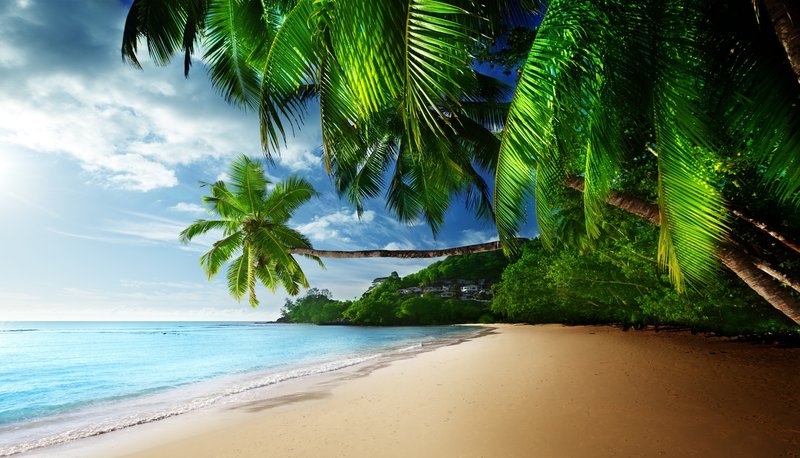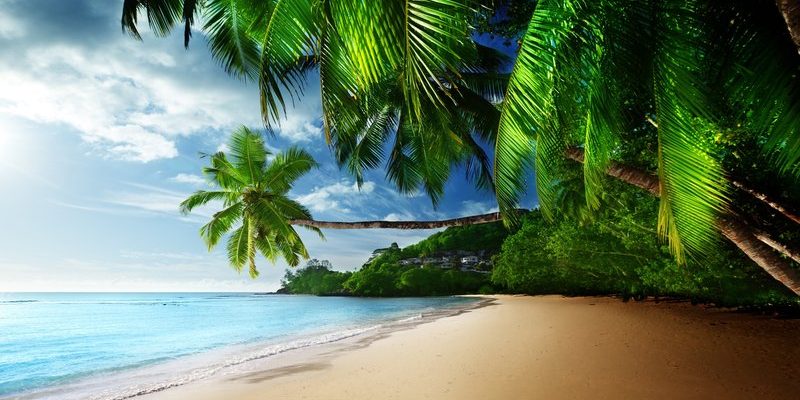
Imagine walking through a lush, green forest, where the sunlight dances through the leaves, and suddenly, you catch sight of a bird that seems almost too beautiful to be real. That’s the Paradise Flycatcher for you! With its striking plumage and graceful movements, this bird is like the jewel of the tropical skies. Native to parts of Africa and Asia, it captivates birdwatchers and nature lovers alike.
The Paradise Flycatcher is not just any bird; it’s a marvel of nature. Known for its long tail feathers and vibrant colors, it stands out in any setting. Most species exhibit sexual dimorphism, meaning males and females look quite different from each other. Males boast eye-catching hues like deep blue or turquoise, while females often sport more muted tones. This variation in color displays the fascinating world of avian evolution and adaptation.
In this article, we’ll explore the fascinating aspects of the Paradise Flycatcher, covering its habits, habitat, diet, and more. If you’ve ever found yourself fascinated by birds, or if you’re just curious about these amazing creatures, stick with me as we dive into the world of the Paradise Flycatcher!
Physical Characteristics
The Paradise Flycatcher is truly a sight to behold. Males typically reach a size of about 20 to 25 centimeters in length, but their impressive tail feathers can extend even longer, adding a dramatic flair to their appearance. These tail feathers can be as long as their body, and when in flight, they create a beautiful spectacle that can mesmerize onlookers.
Their plumage varies depending on the species. For instance, the male Indian Paradise Flycatcher showcases a stunning white body paired with a striking black crown and long, flowing blue-black tail feathers. In contrast, females are generally brown or tan, which helps them blend into their surroundings—an important trait for nesting and protecting their young.
Additionally, their beaks are short and pointed, perfectly adapted for catching insects, which makes up a large part of their diet. The combination of their vibrant colors and unique features makes the Paradise Flycatcher a true standout among other birds. It’s like meeting a celebrity in nature!
Habitat and Range
The Paradise Flycatcher thrives in various habitats, mainly favoring tropical and subtropical forests, but you can also find them in open woodlands and gardens. These birds prefer areas where there’s plenty of cover for nesting and hunting, as they need protection from predators and a safe place for their young. They have a wide distribution across India, Sri Lanka, Southeast Asia, and even parts of Africa.
What’s interesting is their migratory behavior. In some regions, particularly in more temperate areas, these birds migrate seasonally. For example, the Indian Paradise Flycatcher is known to move to lower elevations during winter, seeking warmth and food. This seasonal movement showcases their adaptability to changing environmental conditions.
If you ever find yourself wandering through a tropical forest or garden, keep your eyes peeled. You might just spot a Paradise Flycatcher flitting playfully between branches or performing its mesmerizing aerial displays. It’s a little treasure waiting to be discovered!
Diet and Feeding Habits
The diet of the Paradise Flycatcher is quite varied, but they primarily feed on insects. They are agile hunters, adept at swooping through the air and catching their prey mid-flight. Their typical meals include a variety of insects such as flies, beetles, and caterpillars. Occasionally, they may also consume fruits and berries, especially during the breeding season when they need extra energy.
One of the most fascinating aspects of their feeding habits is their hunting technique. Paradise Flycatchers often perch quietly on branches, waiting patiently for an unsuspecting insect to pass by. Once they spot a target, they launch themselves into the air, showcasing their incredible speed and agility. If you’ve ever watched a cat stalk its prey, that’s somewhat similar to how these birds operate!
Moreover, they play a crucial role in their ecosystem. By controlling insect populations and dispersing seeds through their fruit consumption, Paradise Flycatchers contribute to the health of their environment. It’s a classic example of how every creature, no matter how small, has its place in the grand tapestry of nature.
Breeding and Nesting
The breeding season for the Paradise Flycatcher varies by region, but it generally occurs during the warmer months when food is abundant. Courtship involves elaborate displays, with males showcasing their stunning plumage to attract females. They often perform aerial acrobatics, which is both a visual treat and a way to demonstrate their fitness as mates.
Nesting typically occurs in trees or shrubs, where the female builds a small cup-shaped nest using twigs, leaves, and sometimes even spider silk. This construction process is a labor of love, as it requires careful selection of materials to ensure the safety and warmth of the eggs. The female usually lays two to four eggs, which she incubates while the male helps by bringing her food.
Once the chicks hatch, both parents take turns feeding them. It’s a delightful sight to see these tiny, fluffy creatures being cared for diligently by their parents. As the chicks grow, they’ll eventually fledge and venture out into the world, ready to start their lives as independent birds. It’s a heartwarming reminder of the cycle of life!
Conservation Status
The conservation status of the Paradise Flycatcher varies depending on the specific species and their geographical location. While many populations are stable, habitat loss due to deforestation and urbanization poses a significant threat to their survival. As forests are cut down for agriculture or development, these birds lose their homes and food sources.
Conservation efforts are crucial to protect their habitats. Organizations and governments are working to establish and maintain protected areas where Paradise Flycatchers can thrive. Awareness and education about the importance of these birds can also foster appreciation and inspire local communities to engage in conservation efforts.
Additionally, initiatives that focus on reforestation and sustainable land use practices can make a significant difference. By creating a balance between human needs and wildlife conservation, we can help ensure that future generations will also get to marvel at the beauty of the Paradise Flycatcher. After all, every little effort counts when it comes to protecting our feathered friends!
| Common Name: | Paradise Flycatcher |
| Scientific Name: | Tersina viridis |
| Size: | 20-25 cm (8-10 inches) |
| Wingspan: | ~30-35 cm (12-14 inches) |
| Diet: | Insects and fruits |
| Habitat: | Tropical and subtropical forests |
| Lifespan: | 5-10 years in the wild |
| Conservation Status: | Variable by species; some are stable, others at risk |
Behavior and Social Structure
The Paradise Flycatcher is generally a solitary bird, especially outside of the breeding season. During this time, you might spot a single bird perched quietly, observing its surroundings. However, during the breeding season, they become more social, engaging in courtship displays and bonding with their partners. It’s like watching a dance, where each partner plays their role to perfection.
These birds are known for their agility and acrobatics. They often perform short, rapid flights between perches, displaying a level of grace that is reminiscent of a ballet dancer. When they fly, their long tail feathers trail behind them like a ribbon, adding to their elegance.
Interestingly, Paradise Flycatchers communicate through a variety of calls. Their songs can be a melodious series of whistles that echo through the trees, creating a beautiful soundscape that adds to the ambiance of their habitat. These calls serve multiple purposes, from attracting mates to establishing territory and communicating with their young.
Interaction with Humans
For many, the Paradise Flycatcher is a symbol of beauty and grace in nature. Birdwatchers and nature enthusiasts often seek out these stunning creatures to observe their behaviors and enjoy their breathtaking displays. In some cultures, they are celebrated in folklore and art, representing freedom and the beauty of nature.
However, with human encroachment into their habitats, these birds face challenges. Urbanization, deforestation, and climate change all threaten their survival. Awareness and education about the importance of conservation can help mitigate these issues. By appreciating and protecting these birds, we not only secure their future but also enrich our own lives with the joy they bring.
Some organizations offer birdwatching tours specifically tailored to showcase Paradise Flycatchers in their natural habitats. Participating in such activities can provide a deeper understanding of these birds and encourage conservation efforts. Plus, it’s an exciting way to connect with nature and its wonders!
FAQ
What is the habitat of the Paradise Flycatcher?
The Paradise Flycatcher typically inhabits tropical and subtropical forests, as well as gardens and open woodlands. These environments provide the cover they need for nesting and hunting.
How long do Paradise Flycatchers live?
In the wild, Paradise Flycatchers have a lifespan of about 5 to 10 years. However, their lifespan can vary based on environmental conditions and threats from predators.
Are Paradise Flycatchers migratory?
Yes, some populations of the Paradise Flycatcher are migratory. For example, the Indian Paradise Flycatcher migrates to lower elevations during the winter months in search of warmer weather and abundant food sources.
What do Paradise Flycatchers eat?
Paradise Flycatchers primarily feed on insects, including flies, beetles, and caterpillars. They also enjoy fruits and berries, especially during the breeding season.
How do Paradise Flycatchers communicate?
These birds communicate through a variety of calls and songs. Their melodious whistles help establish territory, attract mates, and communicate with their young, creating a beautiful soundscape in their habitat.
What is the conservation status of the Paradise Flycatcher?
The conservation status of the Paradise Flycatcher varies by species. Some populations are stable, while others face risks due to habitat loss and other environmental challenges. Conservation efforts are in place to protect these beautiful birds.
Can I see Paradise Flycatchers in my area?
Paradise Flycatchers are found in various regions, especially in tropical and subtropical areas of Africa and Asia. If you’re in these regions and explore forests or gardens, you might have the chance to spot one!
Do both male and female Paradise Flycatchers care for the young?
Yes, both male and female Paradise Flycatchers take an active role in caring for their young. The female builds the nest and incubates the eggs, while the male helps bring food to the nest after the chicks hatch.
What are the most remarkable features of the Paradise Flycatcher?
The most remarkable features include their stunning plumage, especially the long tail feathers of males, and their agile flying skills. These characteristics make them stand out and a delight to observe.
How do Paradise Flycatchers contribute to their ecosystem?
Paradise Flycatchers play a crucial role in controlling insect populations and dispersing seeds through their fruit consumption. This contributes to the balance of their ecosystem, highlighting the importance of every species in nature.
Can I feed Paradise Flycatchers in my backyard?
While it’s generally not recommended to feed wild birds, providing a bird-friendly environment with native plants can attract Paradise Flycatchers and support their natural feeding habits. Creating a habitat that includes flowering plants and fruiting trees can encourage them to visit!
Are Paradise Flycatchers social birds?
Paradise Flycatchers are generally solitary outside the breeding season, but they become more social during courtship and breeding. Their interactions during this time can be quite playful and engaging.

